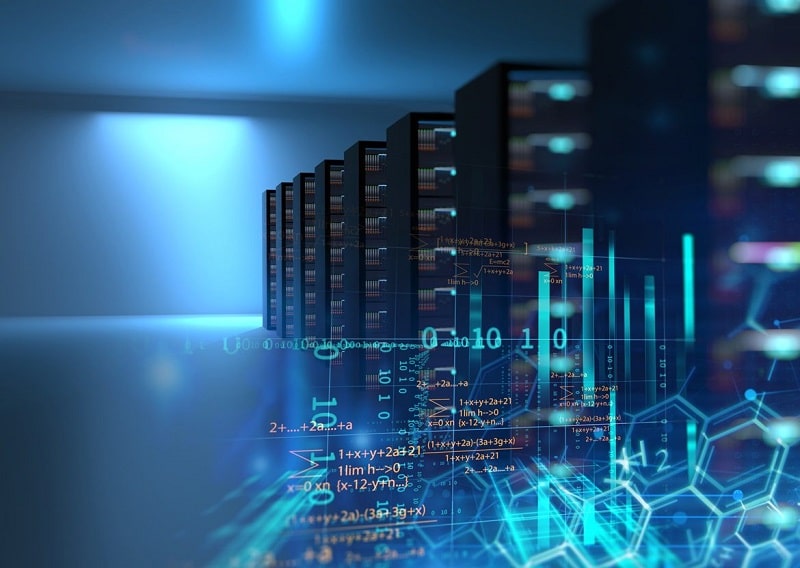Issuance of the Framework of digital infrastructure development of Vietnam
The article below will provide detailed content on the issuance of the Framework of digital infrastructure development of Vietnam

Issuance of the Framework of digital infrastructure development of Vietnam (Image from the internet)
On September 10, 2024, the Minister of Information and Communications of Vietnam issued Decision 1512/QD-BTTTT regarding the Framework of digital infrastructure development of Vietnam.
Issuance of the Framework of digital infrastructure development of Vietnam
The Framework of digital infrastructure development of Vietnam clarifies the components and development requirements of Vietnam’s digital infrastructure, reflecting the evolution and expansion from traditional telecommunications infrastructure to new infrastructures according to Vietnam's unique approach.
The Framework of digital infrastructure development of Vietnam serves as a basis for:
- The Ministry of Information and Communications to issue or propose to competent authorities to enact policies to promote development and regulations for managing Vietnam's digital infrastructure.
- Telecommunications enterprises and digital technology enterprises to identify new development spaces and build development orientations for the 2024-2030 period.
The Framework of digital infrastructure development of Vietnam will be updated and supplemented to align with the practical development of Vietnam's digital infrastructure and global digital infrastructure trends.
Vietnam’s digital infrastructure includes four main components as follows:
(1) Telecommunications and Internet Infrastructure
Telecommunications and Internet infrastructure includes telecommunications infrastructure and Internet infrastructure, which are essential infrastructures serving socio-economic activities. Telecommunications infrastructure serves as a foundation for transmitting information and data. Internet infrastructure provides connection and global linkage, ensuring access to information and online services.
Telecommunications infrastructure includes the following basic components: international transmission systems, domestic transmission systems, fixed telecommunications networks, mobile telecommunications networks (4G, 5G, 6G,...), WiFi, satellite telecommunications networks, and dedicated data communication networks serving the Communist Party and State agencies,...
Internet infrastructure includes the following basic components: Internet Exchange stations (IX), DNS (Domain Name System) server systems, routers, switches, and other devices.
(2) Data Infrastructure
Data infrastructure creates a safe and efficient environment for storing, processing, and distributing large amounts of data, ensuring services are always available and highly reliable.
Data infrastructure includes the following basic components:
- Data centers include: national data centers, regional data centers, local data centers, with an emphasis on attracting the deployment of hyperscale data centers, AI data centers,...
- Cloud Computing.
(3) Physical-Digital Infrastructure
Physical-digital infrastructure digitizes the real world, creating a one-to-one mapping between the real world and the digital world, facilitating interactions between these two worlds. This is a critical component of digital transformation, with most benefits of digital transformation derived from this infrastructure.
Physical-digital infrastructure includes the following basic components:
- IoT devices serving the digitization of the real world, enabling interaction between the real world and the digital world.
- Networks for data transmission between sensor devices, control units, and applications,... (e.g., LoraWAN systems, Sigfox, Zigbee, 4G, 5G, WiFi...).
- Data generated from digitizing the real world.
- Data processing components include: Middleware, Simulation Software, and Digital Twin:
+ Middleware functions as a bridge between devices, data, and applications, aiding different systems to communicate and interact seamlessly. Middleware manages data flow, ensures compatibility across different systems, provides a common language for information exchange, and simplifies the deployment and integration of real-digital connection applications across various life areas.
+ Simulation software is used to simulate the operation of an object, system, or physical process in the real world based on given parameters.
+ Digital Twin is a simulation updated in real-time, accurately reflecting the status and behavior of a physical object, system, or process in the real world.
(4) Digital Utilities and Digital Technology as a Service Infrastructure
* Digital Utilities
Digital utilities are platforms providing essential digital services widely in a simple, fast, seamless, and secure manner for individuals, organizations, and businesses. Digital utilities are built on open and compatible standards, assisting organizations and enterprises in developing digital applications and solutions for national digital transformation.
Digital utilities include:
+ Digital Identity;
+ Digital Payment;
+ E-Invoice;
+ Data Integration and Sharing;
+ Digital Document Authentication;
+ Digital Signature and Digital Signature Certification;
+ Other Digital Utilities.
* Platforms Providing Digital Technology as a Service
Platforms providing digital technology as a service supply digital technologies in service form, facilitating businesses and individuals to easily, quickly, and cost-effectively access and use technology.
Platforms providing digital technology as a service include: Artificial Intelligence as a Service, Blockchain as a Service, and other digital technologies provided as a service.
More details can be found in Decision 1512/QD-BTTTT which comes into force in Vietnam from September 10, 2024.
- Number of deputy directors of departments in Vietnam in accordance with Decree 45/2025/ND-CP
- Cases ineligible for pardon in Vietnam in 2025
- Decree 50/2025 amending Decree 151/2017 on the management of public assets in Vietnam
- Circular 07/2025 amending Circular 02/2022 on the Law on Environmental Protection in Vietnam
- Adjustment to the organizational structure of the Ministry of Health of Vietnam: Certain agencies are no longer listed in the organizational structure
- Vietnam aims to welcome 22-23 million international tourists in Vietnam in 2025
-

- Number of deputy directors of departments in Vietnam ...
- 15:04, 05/03/2025
-

- Cases ineligible for pardon in Vietnam in 2025
- 14:43, 05/03/2025
-

- Decree 50/2025 amending Decree 151/2017 on the ...
- 12:00, 05/03/2025
-

- Circular 07/2025 amending Circular 02/2022 on ...
- 11:30, 05/03/2025
-

- Adjustment to the organizational structure of ...
- 10:34, 05/03/2025
-

- Notable new policies of Vietnam effective as of ...
- 16:26, 11/04/2025
-
.Medium.png)
- Notable documents of Vietnam in the previous week ...
- 16:21, 11/04/2025
-
.Medium.png)
- Notable documents of Vietnam in the previous week ...
- 16:11, 02/04/2025
-
.Medium.png)
- Notable new policies of Vietnam to be effective ...
- 16:04, 02/04/2025
-
.Medium.png)
- Notable new policies of Vietnam effective from ...
- 14:51, 21/03/2025

 Article table of contents
Article table of contents
